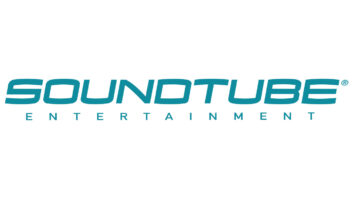BOSTON — Unit sales of aftermarket in-dash navigation will grow in North America in the coming years, though not at the pace of OEM-navigation shipments, a Strategy Analytics study forecasts.
Sales of portable navigation devices (PNDs) will continue to decline in North America, the forecast also shows.
In North America, OEM shipments will grow at a compound annual growth rate (CAGR) of 22 percent in North America to 12.3 million for the 2011 through 2019 period as automakers reduce prices to compete more aggressively with smartphone navigation apps and PNDs, the company said.
The CAGR of PNDs will fall 7.5 percent to 6 million during that time despite their cost advantage over OEM and aftermarket in-dash systems and despite their ability to more quickly incorporate the latest advancements, Strategy Analytics said. That’s because of the growing selection of smartphones and tablets with free navigation apps. Demand to replace older PNDs isn’t likely to lift PND sales because many consumers are opting for smartphone navigation or purchasing OEM navigation systems with their cars, said report author John Canali.
In the in-dash navigation aftermarket, North American sales will grow through 2019 even as the overall aftermarket head-unit market shrinks, but in-dash navigation sales will remain well below unit sales of OEM navigation and PNDs, Strategy Analytics said.
Strategy Analytics forecasts unit sales of aftermarket in-dash navigation will grow from 517,000 in 2011 to 1.52 million in 2019 for a CAGR of 14 percent.
“The basic premise is that navigation becomes just another feature in the head unit, said analyst Richard Robinson. “We have overall attach rates of navigation as a feature in aftermarket head units in North America at 10 percent in 2011. This rises to 30 percent of aftermarket head units by 2019.”
The aftermarket in-dash numbers pale in comparison to the OEM numbers for multiple reasons. “Better integrated OEM infotainment systems are reducing the opportunities for aftermarket navigation deployment,” the study found. “Consumers will likely instead buy a PND or use a smartphone app, [and] others that greatly value navigation will have it installed as an OEM option or dealer-fitted.”
Automakers, the study also said, have an advantage over the aftermarket in their ability to integrate an in-dash navigation display with a touchscreen that controls other functions in an OEM infotainment system. OEMs also benefit from integrating the design of their nav systems with the dashboard.
Aftermarket systems also face pressure from PNDs, the company said. “Aftermarket systems are much more static and will not evolve with technology as well as simply repurchasing PNDs every few years,” the report said. And compared to PNDs, “prices for aftermarket embedded systems remain high because providing automotive-grade durability is expensive.”
The company also contends that the distribution channels for in-dash aftermarket navigation are “quickly drying up.”
In the OEM market, Strategy Analytics expects North American sales to rise despite limited success to date because automakers will eventually get around to lowering the prices of their embedded and Cloud-based navigation systems to compete with free and low-cost smartphone apps. “In the coming years, more and more consumers will have access to free navigation, and consumers will struggle to understand why a $30,000 vehicle does not have navigation as standard while a $200 smartphone does have navigation. That will put significant pressure on OEMs to resolve this issue.”
“Navigation in the consumer device market is largely a commodity,” the report said. “OEMs, especially in North America, have been extremely slow to recognize this and continue to offer navigation as a costly option. This has greatly limited the penetration of navigation in volume vehicles.”
However, the report said, “ OEMs are now starting to break out of the high-price bracket for navigation by offering low-cost devices that are similar to PND solutions.”
In addition, automakers have begun to adopt such lower-cost options as maps on SD cards to turn an OEM display into a navigation display.
Opportunities for adding lower-priced OEM navigation are growing with the growth of in-vehicle displays, which is “lowering the feature cost of embedding navigation in the dash,” Strategy Analytics added.
As for PNDs, automakers offering “hard-wired smartphone integration and low-cost SD-card based navigation will continue to erode the popularity of PNDs,” the report said. As for competition with smartphones, the report stated, “PNDs have not been able to sufficiently differentiate themselves from smartphones and in many cases have not been able to match the quality of the user experience of embedded navigation solutions.”
In addition, as smartphones increase in size, and as tablets gain increased penetration, “PNDs will struggle to remain well-differentiated products,” the report concludes.
Although PND makers had hoped that replacement purchases would offset market saturation in North America and Europe, “this is unlikely to materialize as many consumers are opting for smartphone navigation or purchasing a vehicle with embedded navigation.” Still, many consumers prefer a dedicated navigation device, and PNDs remain a low-cost option, the report said, ensuring the market’s continued existence.
“PNDs are inexpensive enough so that many consumers will own both a PND and a smartphone,” the report said. “Unlike [smartphone] off-board navigation, PNDs provide a physical display which consumers can look at, and consumers do not need to fear that problems with [wireless] connectivity will occur. With prices often hovering around $100, PNDs make good gifts, and both TomTom and Garmin target occasions such as Father’s Day with promotions and sales.”













